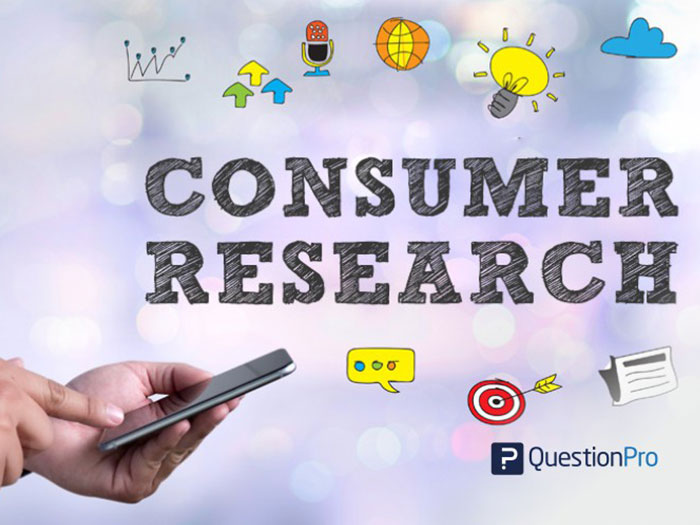An In-depth interview (IDI) is a qualitative research technique that involves conducting individual interviews with respondents to explore their perspectives on a particular idea, program, or situation. For example, we might ask participants, staff, and others associated with a program or certain situation about their experiences and expectations related to that particular event. Their views about program operations, processes, outcomes, and about any changes they perceive in themselves as a result of their involvement in that particular event or program.
There are numerous areas where one can undertake IDIs for example, for consumer’s feedback and opinion on product or advertisement. In Pakistan, particularly in metropolitan cities such as Karachi, Lahore and Islamabad customers are very conscious about the type of product they are using and therefore their valuable feedback can help companies to devise strategies accordingly.
Designing Questionnaire
The research is always based on some objectives and these objectives ought to be in line with problem statements developed after assessing underlying gaps in activities performed by any organization. Research Objective will determine the structure and pattern of the Questionnaire. Therefore, the first and foremost important factor prior to conducting any research activity is an assessment of problems followed by preparation of research instrument i.e. Questionnaire. This instrument plays a very vital role in probing factors lurking behind problems identified.
The Questionnaires will help in assessing to what extent respondents are aware of the event under probe and if questionnaires are not designed with an ultimate purpose in mind, the whole purpose of conducting this activity is lost.
Questionnaire preparation must be carried out with a keen eye for events and arguments associated with the problem. Also, previous instruments used for similar researches can be consulted and with little or no modification if it serves the purpose can be utilized
Designing Manual and Guide for Interview
An interview protocol is very crucial, the rules that guide the implementation of the interviews. These are the instructions that are followed for each interview, to ensure consistency between interviews, and thus increase the reliability of the findings. Clear instructions for the interviewer should be included in the manual for conducting IDIs. The manual address following concerns i.e. What to say to interviewees when setting up the interview; What to say to interviewees when beginning the interview, including ensuring informed consent and confidentiality of the interviewee; What to say to interviewees in concluding the interview; What to do during the interview likes, Taking notes or using Recorder or Both?
The Interview guide is a checklist that carries questions or issues to be explored during the interview. There should be no more than 15 main questions to guide the interview, and probes should be included where helpful.
It is also important to note that you will likely need interview guides for each group of stakeholders, as questions may differ. Where necessary, translate guides into local languages and test the translation.
Arranging Target Audience Identify stakeholders who will be involved i.e. what information is needed and from whom. List the stakeholders to be interviewed. Identify stakeholder groups that are associated with the objectives of your IDIs. Suppose you are conducting IDI’s for the IT sector, and you want to identify what possible strategy could be adopted to address gaps in meeting revenue targets. For this you will be interviewing stakeholders such as associations working for the IT sector, government institutes involved in regulating IT sector activities, CEOs of IT companies etc. Data acquired from all the stakeholders in turn will help in analyzing the issue from a wide angle.
Similarly, if you are seeking an assessment from the target audience which is the general population again IDIs can play a very vital role. For Example, the baby products by P&G and Unilever are widely used for kids and thereby, mothers can be interviewed exclusively for gathering their opinion and experience about product’s utility. Customer perception is key in analyzing the effectiveness of any product the moment it lands on their shopping cart.
IDIs are normally directed toward those from whom very relevant and up-to-date information can be sought and also they are involved with significant stakes in activity under investigation. Therefore, referral or snowball sampling is the best method to approach stakeholders for IDIs.
Conducting In-depth Interviews:
Step 1: Making Venue arrangements (Online i.e. Zoom, Teamviewer, Skype)
If the IDI is taking place offline, it is important to note that the venue must be arranged somewhere convenient and accessible to respondent, normally the interviews are conducted in the respective office of Respondent. Prior to finalizing your venue you can drop an email to the respondents about the desired venue location and after getting their consent Interview can be arranged.
Similarly, Online IDI is easy and accessible for the respondent to attend. All that is required is good internet connectivity. The Interview can be arranged on a variety of online platforms such as the Zoom Meeting Room, Team Viewer, Skype etc. Also, for IDIs other options like WhatsApp video, iPhone’s facetime, and Facebook video chat can be utilized as well.
Step 2: Inviting Respondents
Respondents consent to take an interview will be followed by an invitation for an interview. Offline session invitation shall include, venue location, description of IDi, moderator, etc.
Online Invitation will also be sent via email, it will contain a link to any of the desirable online platforms along with a description of IDI.
Step 3: Recording Arrangements online
In face to face Interview,recorder can be set with the permission of the respondent while in online session, recording can be turned again after consent from Respondent.
Step 4: Actual Discussion more points
Once the interviewee is at the venue or has joined an online session, the IDI is good to begin. Moderator will introduce himself and the agenda of discussion, after this manual/interview guide will be followed to conduct the session. Each question has a set of probing points and in case the respondent does not comprehend the scenario a hint can be given which are marked as probing points with a moderator. Also, it is crucial for the interviewer to pay attention to what the respondent is telling and follow-up questions should be asked if clarity is required for any of his/her responses. If in case the respondent feels offended due to any question don’t stress on it and instead move on to the next question.
Step 5: Concluding Interview Session
After the interview ends a letter of appreciation can be furnished to the respondent for sparing his/her precious time for this session.
Reporting
Step 1: Keeping summary notes during the discussion
It is important to take notes of key points during the discussion. For this Assistant moderator can be tasked to carry out this activity of taking notes.
Step 2: Writing Transcripts
Transcripts of IDIs are very crucial and important for extracting relevant information. All the discussions have to be written down either during the session or later (if recordings are taken) for Reporting and Analysis.
Step 3: Make Summary of each discussion
Summary of all relevant and important responses i.e. Question wise has to be extracted from transcripts and a comprehensive report will be created for highlighting key areas which may include improvement areas, core problem areas, opportunities, threats, strength and weaknesses.
Step 4: Topline Report
Based on the summary topline report will be prepared, it contains all the important points identified by respondents which are directly related to Objectives of IDIs. It is preferred that topline report should be a grid with questions on one axis and precise response by respondents on other providing a very clear glimpse of the overall discussion.
Step 5: Analysis
Based on the overall discussion and topline report analysis is drawn to conclude the outcomes of the discussion in line with the Objectives of carrying out this discussion. The Analysis is shared with the Client and thereupon necessary action plans can be prepared to address the problem.









